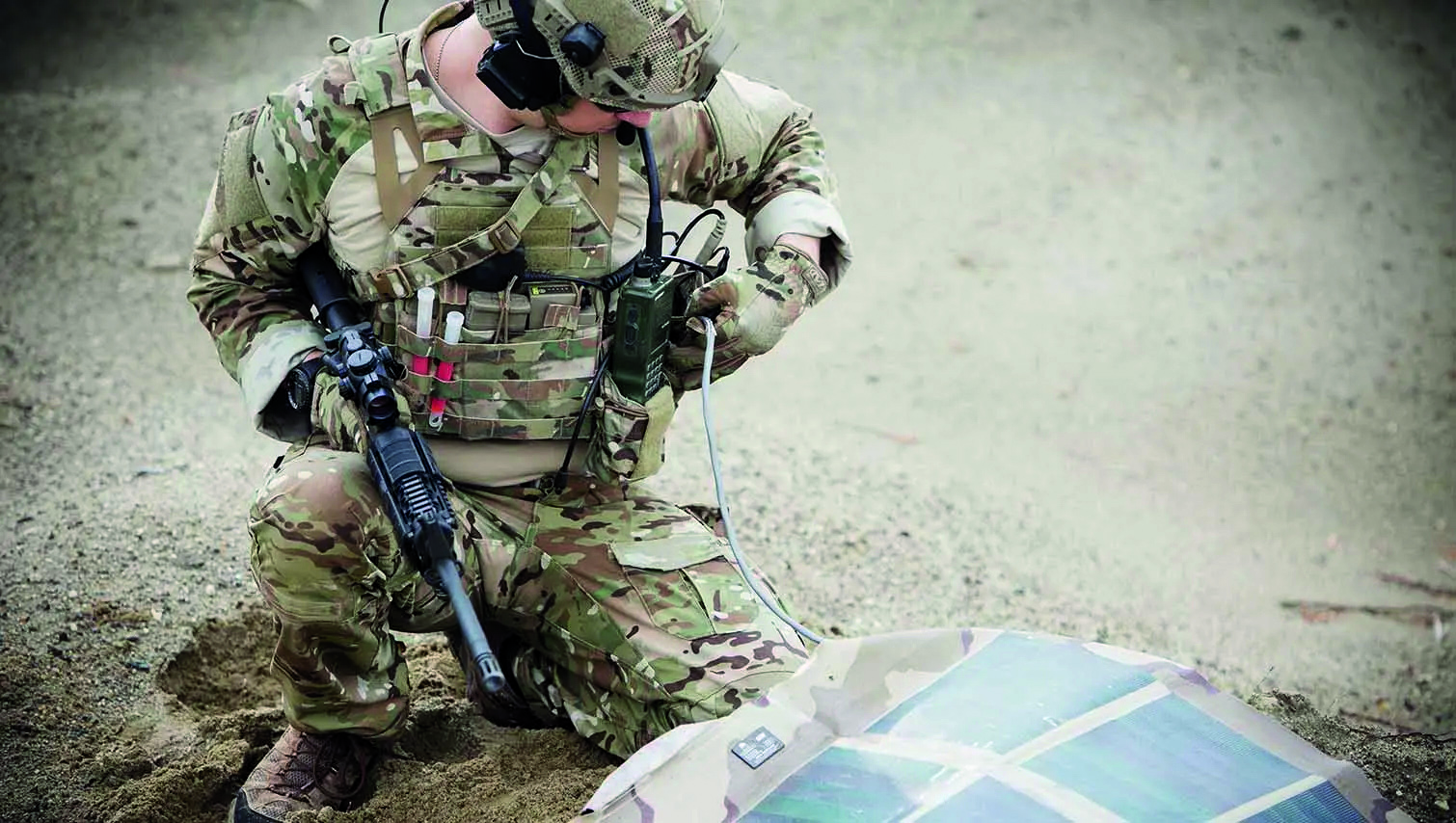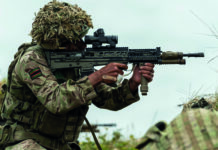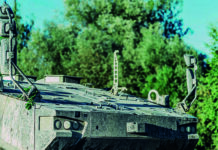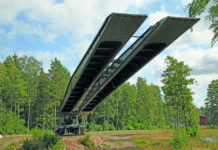The individual soldier of the future will wear and carry more technology than ever before, as the various future soldier programmes in play around the globe prove. And with many worn sensors and powered equipment involved, the need for effective, personal power supplies is fundamental.
The connected soldier on the networked battlefield is power hungry. This article looks at what is driving the need for reliable and evermore efficient batteries and personal power supplies on today’s battlefield.
More Tech, More Power
From GPS and smartphones, to personal radios, tablets, night-vision goggles (NVGs), infra-red weapon sights and other optical systems such as video cameras; these are just some of the devices and equipment the dismounted soldier is expected to carry/wear today, all of which place high and low-power demands on personal power supplies carried by the individual soldier. High power for such things as laser range finders, low power for such as NVGs. And having become a major source of intel and situational data gathered by those various sensors, which will ideally be uploaded to higher formations for informed tactical and strategic decision-making purposes, it makes it even more essential the power needs of all those sensors and systems are met and managed. Management is crucial, important energy savings can be made by power management systems intelligently delivering only the right amount of energy required, when it’s required, to a device, interrupting supply completely until it’s needed again, as well as monitoring charge state, so no soldier runs out of power for a life-critical application at the wrong moment.
Powering One Future System
For the French FELIN system, one of the future soldier programmes alluded to above, this consists of several powered systems including latest optronic devices fitted to the individual soldier’s personal weapons, the FAMAS assault rifle and the MINIMI light machine-gun and FRF2 sniper rifle. These devices include light intensification/thermal imaging sights and for the FAMAS rifle the sight also incorporates a video camera to transmit images to a video monitor on the soldier’s chest or to his helmet’s ocular display. The soldier’s helmet is also fitted with optronic systems, including a helmet-mounted thermal imager and these will display their output on the same miniature displays as the images from the weapon-mounted video camera. The system’s electronic jacket integrates electronics such as computer unit, manager unit, radio, man-machine interface, GPS, cables and connector. FELIN’s personal communications systems enable individuals to establish a local combat network at the infantry section level. Platoon commanders are additionally equipped with a multi-function compass/range finder/thermal imaging monocular sight providing an additional observation capability, day or night, and section commanders and special-purpose groups, suh as recon patrols, are further equipped with a portable information terminal to enable encrypted communications with commanders for the relay of tactical and situational intel. And all these systems require power, and that means carrying batteries, which add weight. For FELIN, at its heart is a portable electronic platform designed around a high-volume databus (USB 2.0), that manages the power resources and signal exchanges between the various sub-systems. By ensuring that components have maximum interoperability, FELIN has been able to cut weight and ensure that soldiers don’t need to carry any more batteries than necessary. Indeed, FELIN is designed to have all its sub-systems powered by two rechargeable Li-ion batteries and peripheral equipment can be connected to the physical connection ports situated at the front of the battery units. The Li-ion batteries are provided, in part, by official Felin project developer and supplier, the Swiss Leclanché group and French military vehicles are equipped for infantry to recharge those batteries; collective recharging units using aluminium-air/metal-air fuel cells are also used for recharging.
Juice for Buck
In general, and relevant to any military procurement personal power supplies whether for future soldier systems like FELIN, or other applications, when assessing battery weight, users need the greatest watt hours per kilogramme (Wh/kg) that’s affordable to them.
Armed forces are continually having to manage the continued use of legacy equipment and technologies, even as new systems enter service to run alongside older tech. In the case of batteries, some of the devices and sensors used by the individual soldier will often be able to share the same battery, although many systems will not, hence soldiers end up having to carry several kinds. Each device a soldier carries might have been added to the kit at a different time and require a battery that is not compatible with the rest of it. For example, a new piece of equipment added to the rifle might need its own battery, which could mean modifying the weapon, or running a cable from the rifle to a battery carried by the soldier. This could be a multi-purpose battery such as the BB-2590, design over 40 years ago to power manpack radios, though today has more than 50 different uses. Indeed, the BB-2590/U family is now the most widely used military battery in the world. Operated by US and NATO forces in numerous tactical applications, BB-2590/U type batteries provide personal power supplies to power such things as communications equipment, sensors, surveillance equipment, thermal imagers and robotic systems. The rechargeable battery chemistry in the BB-2590 has evolved from its original lead-acid configuration, through nickel-based to its current lithium-ion (Li-ion) chemistry with product supplied by leading industry battery makers such as Bren-tronics, Epsilor, Saft and many others.
Taking Saft as an example, in its efforts to lighten the soldier’s load, the company’s most recent version of the BB-2590 — the BB-2590HC/U — offers 187 Wh/kg, compared with its predecessor’s 127 Wh/kg performance. Saft’s military Li-ion battery packs today include safety features such as electronic protection, thermal fuses, positive temperature coefficient fuses and diodes, with some versions also including an LED or LCD fuel-gauge display; all are compatible with various constant current/constant voltage chargers. State-of-Charge/State-of-Health indicators are also increasingly included on a range of Saft and other makers’ batteries as an additional way to help the individual soldier monitor the charge levels of their personal power supplies.
A Personal Powered Future
The soldier of yesteryear had few personal power needs for which basic batteries have long been the traditional source of dumb, unmanaged power. If more power was needed, spare batteries were carried, but a pouch full of batteries means one less full of ammunition. Today’s future soldier systems, however, with all their high-tech sensors and powered gadgetry, demand innovative ways to power everything, without weighing down an already weighed-down soldier with masses of spare batteries. Much R&D has been undertaken into personal power solutions that reduce the logistical load and enable the individual to remain as mobile and agile as possible; from smaller, lighter batteries using latest chemical solutions such as Li-ion tech, to renewable sources such as worn, flexible, solar panels and innovative power-generating technologies. Even isotope batteries are currently being researched to power the individual soldier; the feasibility of accessing energy stored by isotopes at some 100,000 times the density chemicals can provide is being investigated by the US Army and, if successful, will break through the constraints of chemical-based battery solutions.
A further innovative approach to generating personal power is that of turning thermal energy into electricity; the surfaces of hot objects radiate light in the form of photons into their surroundings and these photons can then be captured by a photovoltaic (PV) cell and converted to useful electric energy in a conversion process called far-field thermophotovoltaics, (FF-TPVs). Under development for several years, this process is hindered by its low power density and requires high operating temperatures of the hot surface/emitter. A new take on this, however, demonstrates how, when the separation between the emitter and the PV cell is reduced to the nanoscale, it enables much greater power output than is possible with FF-TPVs at the same emitter temperature; this capturing of energy, that is otherwise trapped in the near-field of the emitter, is called near-field thermophotovoltaics (NF-TPV). The US Army’s Research Laboratory has said that if successful, near-field-TPVs could serve as more compact and higher efficiency power sources for soldiers in the future, as these devices can function at lower operating temperatures than conventional TPVs.












